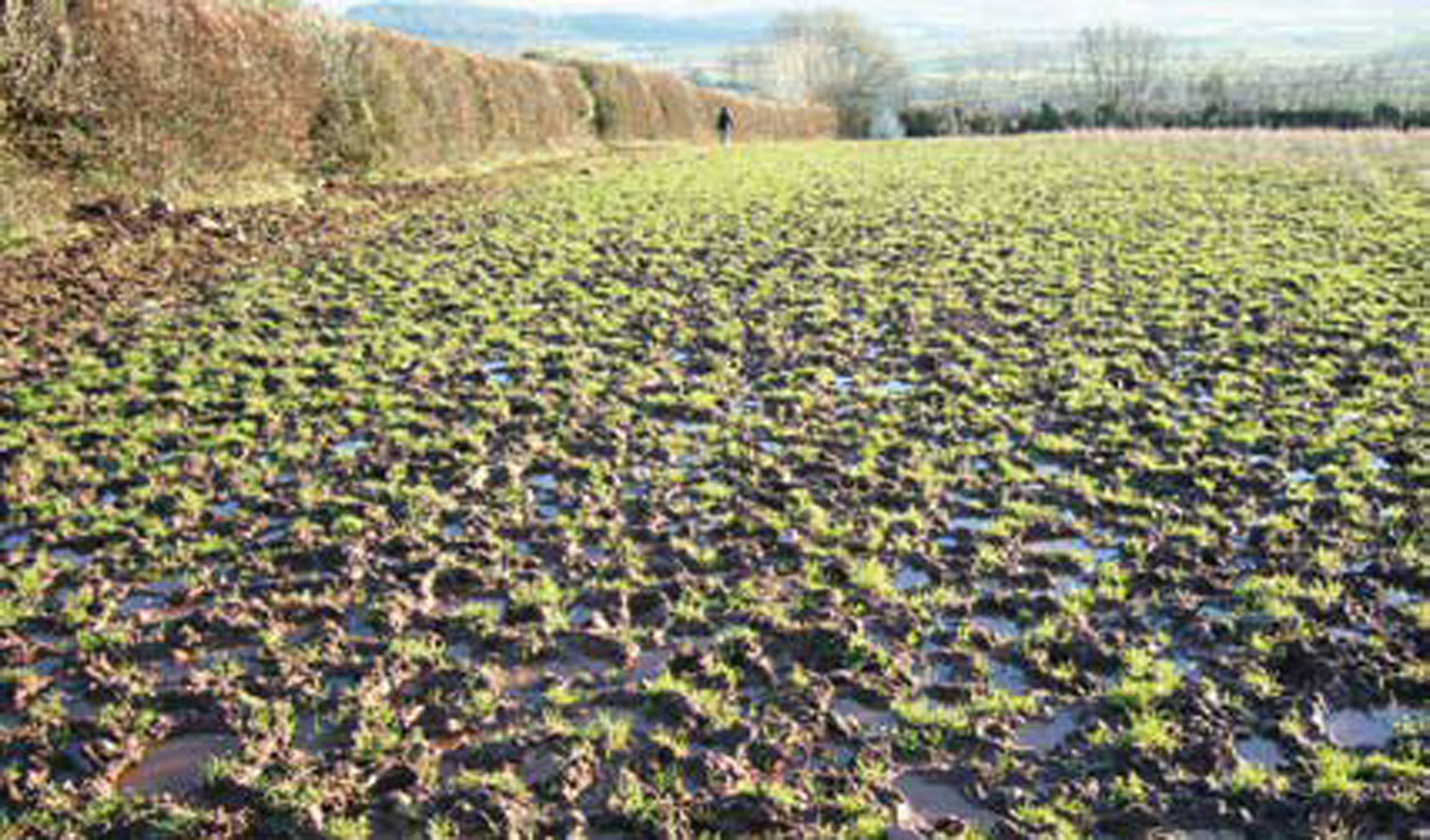 Rainfall and poor ground conditions often lead to poaching. It is estimated that poaching can reduce grass growth by 20% for subsequent grazing, which could prove costly next Spring.
Rainfall and poor ground conditions often lead to poaching. It is estimated that poaching can reduce grass growth by 20% for subsequent grazing, which could prove costly next Spring.
We can reduce the risk of poaching by allowing animals access to pasture for a few hours per day, known as on/off grazing.
On/off grazing is where the animals are let out to grass with an appetite. Feed is restricted when indoors, they are then allowed to graze continuously and are removed from the paddock when finished grazing and brought back into the shed.
This minimises soil damage, encourages good grass regrowth and ensures that grass is being well utilised.
It must be remembered that our grazing actions now will effect Spring grass growth so by implementing a few basic guidelines, we can continue to utilise grass without having a detrimental effect on next years grass growth and our ability to get stock out of sheds.
Ten tips for managing grazing during a wet period:
1. Avoid excessive poaching
2. Turn out priority stock first – this should be the group which will make the most economic use of paddocks first
3. Turn out into smaller groups where possible
4. Reduce paddock sizes to one day or 12- hour paddocks
5. Back fence grazing paddocks in both spring and autumn to ensure they have time to recover
6. On/off grazing has proven to be a successful way to extend the grazing season
7. Graze the most sheltered and driest fields first
8. Use multiple entrances to a field
9. Use a grass corridor to graze the back of the field first
10. Understand animal feed requirements and supplement when needed

